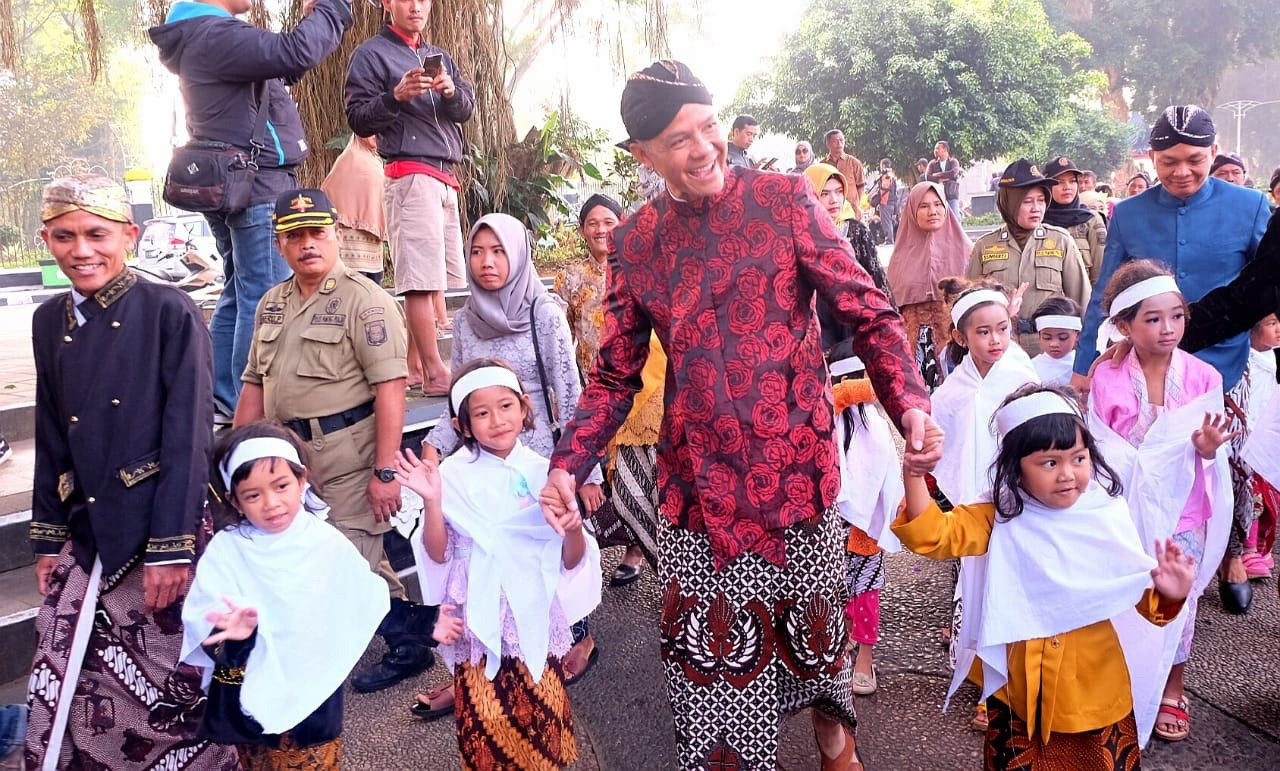Popular Reads
Top Results
Can't find what you're looking for?
View all search resultsPopular Reads
Top Results
Can't find what you're looking for?
View all search results'Rambut gimbal' purification ritual draws hundreds to Dieng Plateau
Children with rambut gimbal (dreadlocked hair) are considered special in the region, especially those with a reddish tint in their locks.
Change text size
Gift Premium Articles
to Anyone
T
welve children from Dieng Plateau in Wonosobo regency, Central Java, looked happy as they lined up for the ruwatan potong rambut gimbal (dreadlock haircut purification) ritual at Wonosobo square on Saturday. They were the center of attention as hundreds of people were watching.
Among the distinguished guests in attendance was Central Java Governor Ganjar Pranowo, who also took part in the ritual.
The governor smiled as he interacted with the children by talking and joking with them, and even carrying them in his arms or walking hand-in-hand with them.
Children with rambut gimbal (dreadlocked hair) are considered special in the region, especially those with a reddish tint in their locks.
A child’s hair usually starts to become tangled when he or she turns 2. Their hair stays tangled even though it is washed and combed regularly.
Hari, a resident of Dieng Plateau, told The Jakarta Post that the start of children having dreadlocked hair is usually marked with a high fever.
“I was gimbal-haired, too,” said Hari.
He went on to say that the dreadlocks were not hereditary because nobody in his family has the “special hair”. Only the chosen ones have dreadlocks, though nobody knows why they are chosen and by whom.
However, according to residents of Dieng Plateau, the dreadlocks came from Kyai Kolodete, a tumenggung (clan leader) from the semimythological kingdom Medang Kamulan who initiated civilization in the area.
Kyai Kolodete was believed to have dreadlocks and be fond of children, and he said that dreadlocked children were his offspring and Dieng Plateau residents must love them, too.
Read also: Tourists, hikers warned about cold weather at Dieng Plateau, Mt. Semeru
At least three different types of dreadlocks can be found in Dieng Plateau. The first is gimbal pari, which grows long, forming small ties resembling rice flowers. The second type, gimbal jatha, has thicker locks that are clearly separated from one another. Lastly, gimbal wedhus looks like the fleece of a sheep.
Residents of Dieng Plateau believe that only a haircut ritual led by elder members of the community would make the children’s hair grow straight.
Meanwhile, parents of gimbal-haired children are required to fulfill the children’s requests, however strange or seemingly impossible.
Some children ask for laptops, bicycles, bracelets, necklaces or dolls. Others may ask for their favorite foods.
Four-year-old Santika Aprilia Putri from Tumenggungan village in Selomerto district, for example, asked for terasi (shrimp paste) and spinach.
“Why terasi? Do you like terasi?” Ganjar asked April.
“Yes, sir, it’s salty, but it tastes good,” the girl answered without guile.
Aufa Hawatus Sya'diah, on the other hand, asked for three trays of klepon (traditional, ball-shaped rice flour dumplings filled with palm sugar).
“This ritual is interesting and it can be a tourist attraction,” said Ganjar, who helped cut a child’s hair under the guidance of a customary figure who led the ritual.
The governor is also aware that hundreds of people came to the event, eager to witness the ritual.
With the dreadlock hair folklore, he said, the ritual could be packaged with other traditional attractions.
He added that the more customary rituals offered as tour packages, the richer Central Java would be with tourist attractions.
“Moreover, we have been focusing on tourism,” said Ganjar, adding that Dieng is one of Central Java’s four priority destinations along with Borobudur temple, Karimunjawa Island and the Sangiran archaeological site. (yun/mut)











